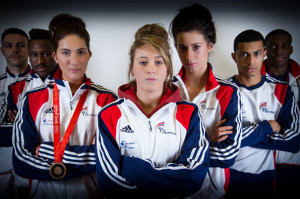
Slingshot: Brand Side.
19th December, 2018
Chances are – if you’re reading this – you’re aware of Slingshot and what we do. Or are you?
Our work with rights holders all over the world has been well documented, whether through our own channels or through numerous industry awards. We have worked as the exclusive sponsorship agency for many of the world’s most innovative platforms to identify and secure strategic brand partnerships. But what may be less known is our brand consultancy service: working also on the other side of sponsorship with global brands to highlight the most relevant partnership platforms in order to achieve the biggest cut-through, awareness and equity.
Our expertise, developed over many years working on the rights-holder side, has led us to understand exactly what brands are looking for when they are considering sponsorship opportunities. Thus, on the flipside we know precisely what assets are needed to be secured to achieve brand marketing objectives, regardless of industry or budget.
How can Slingshot help?
Dream Package:
A crucial step which is often overlooked by brands is the creation of an asset list or dream package. By creating an essential asset list, brands can identify exactly what they require to achieve key objectives and generate a strong ROI. Too often we see brands being one dimensional when it comes to aligning with events and failing to make full use of the opportunity and their budget. A classic case being the purchasing of activation space without making use of the wider PR, marketing and social benefits that would help them cut through at a much higher level with their intended audience (sometimes these extra assets can be bargained within the original price!)
Negotiation:
Many agencies, when given a brief and a budget by a brand will look to spend the whole wad of cash, even if the package offered isn’t worth its price in the current market. With extensive knowledge of sponsorship valuation and sales: Slingshot can negotiate on the brands behalf to get the assets they require at the best possible value. Saving valuable sponsorship monies which can be used to leverage the partnership through activation instead.
Efficiency:
Our extensive network within the industry provides the perfect platform to take a brands’ vision for their sponsorship strategy to market. Building a network takes time and surprisingly, approaching a rights holder for sponsorship enquiries can actually be a lengthy process. However, by utilising an agency who already has an established name in the sponsorship field your brand can save exponential amounts of time, helping you to understand and evaluate the available opportunities more promptly.
Unique Events:
Lastly, Slingshot is renowned for being at the forefront of the industry as one of the most innovative sponsorship agencies. Our position within the sponsorship industry means that we regularly work with niche, innovative and exciting events. Rather than pitch you the same old generic properties, we have access to platforms with specific demographics and highly engaged audiences which stand out from the crowd and can deliver a far better ROI at generally a far better price too. Some of our current clients include Extreme Tech Challenge, a start-up competition held on Necker Island with a B2B focus and a HNWI audience and London New Year’s Day Parade a mass consumer event with 650,000 attendees. Thus, we may already be working directly with a rights-holder which would deliver the cut-through needed for your next product release, re-brand or campaign push!
If you are looking for advice on any aspect of the sponsorship industry, we would be more than happy to offer our expertise, please email [email protected] or call 0207 145 0150 to get started.



